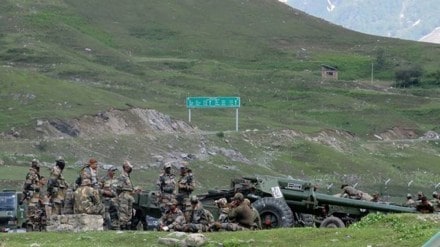Lt Col Umang Kohli
It is often seen how whenever friction between India and China shoots up and incidents like Galwan or Ten Dash Line take place, there’s a talk about India’s capability for strategic deterrence. What most analysts and journalists do not understand is the connotation of strategic deterrence beyond the realms of nuclear deterrence. What needs to be pondered over is the credibility and viability of nuclear deterrence. Can a stockpile of nuclear arsenal deter a country like China from entering India’s territory or launching a diplomatic offensive like issuing a map showing at least one state of the Indian Union under its territory?
Nuclear deterrence almost sounds like a fidayeen attack at a national level. Come to think of it, it is majorly self-destructive and can be used only under desperate circumstances. Even tactical nuclear weapons can only be used when the situation is desperate. Now coming to the important point: What is India’s strategic military deterrence? Can India prevent incidents like Galwan in the future? And if not, then what does India need to do to really build up strategic military deterrence? Does a threat of a small nibbling action along LAC really rattle China or deter it? Are we naive enough to think that a mere rehash and realignment of our existing military infrastructure can act as a credible deterrence?
India’s military thought process needs to undergo major transformation and it must seek for “strategic partnerships” with friendly countries to create a credible deterrence in the short run. It needs to expand its influence not only in the Indian Ocean but also in the Indo-Pacific and beyond. This transformation also needs to include a shift from an emphasis on being an arms importer to an exporter of defence articles and an increased emphasis on bilateral exercises and training with important players in the region. Gone are the days of non-alignment, a strategic deterrence requires diplomatic and strategic alignment with friendly countries to build a credible military deterrence against a country like China. There is space for having alignments and alliances that are military in nature, given how the PLA and Chinese Navy have done the same in the last decade. The time has now come for India to have military bases in various parts of the world just like how the United States and China have. The possibility of having military bases in countries like the Philippines, Papa Guinea, Taiwan, Japan etc. needs to be explored too.
China has more than 370 warships and a capacity to build another 200 within a span of a few months. India, in comparison, has a limited ship-building capability and a much smaller warship fleet. India’s capability to fight an ‘integrated’ amphibious battle needs to be enhanced significantly to build a strategic military deterrence. India could obviously always leverage countries on the West of China, that share a hostile relationship with it, for its integrated amphibious battles.
A credible military deterrence which is non-nuclear in nature would also encompass a change of mindset from being mostly defensive and Pakistan-centric to being largely offensive, broad-based, and flexible. To be able to plan and launch offensives and manoeuvres which could be intercontinental in nature, the office of the CDS needs to be directly under the PMO and not under the Defence Ministry. The office of the CDS, like the office of the NSA, needs to coordinate on matters which are inter-ministerial in nature. Obviously, coordination between the Defence Ministry, Foreign Affairs Ministry and even the Home Ministry would be critical in creating an effective strategic military deterrence.
Till the time trade routes are protected in all respects, they are susceptible to being vulnerable. China in the last two decades has built its military infrastructure to protect and secure trade corridors. The US too has developed its military infrastructure to protect its investments in other countries. The US has investments in countries like Ukraine, Taiwan, South Korea, Bahrain etc. and has shaped geo-politics in these regions and we can see the US also has a strong military presence in these areas. It’s time India also tried to develop a joint economic and military strategy and protect its national interest. Enhancing the capability of our Navy and Coast Guard would go a long way in this direction. Economic power and military domination of trade routes act as a strategic deterrence against incidents like the one we saw in Galwan for China would fear economic losses of a national magnitude.
Hybrid cold wars tend to have skirmishes, powerplay and economic fallouts and these economic fallouts affect the day-to-day life of each citizen. A credible strategic military deterrence should be in place, as it ensures a safe economic environment both in and outside the country.
Another two areas of strategic deterrence are control of energy and technology. It always helps to be ahead of the curve as far as technology is concerned. The US, Russia and China have used both technology and energy as tools to shape geopolitics. It’s time India identified niche areas where military technology can be suitably employed to act as a strategic deterrence against anyone who decides to take it for granted. Space technology is an area where India is doing exceedingly well. There is a requirement of private public partnerships to take space technology to a level where it gives India a strategic edge.
The author is a veteran of the Indian Army is an analyst of geopolitics and international affairs.
Disclaimer: Views expressed are personal and do not reflect the official position or policy of Financial Express Online. Reproducing this content without permission is prohibited.
